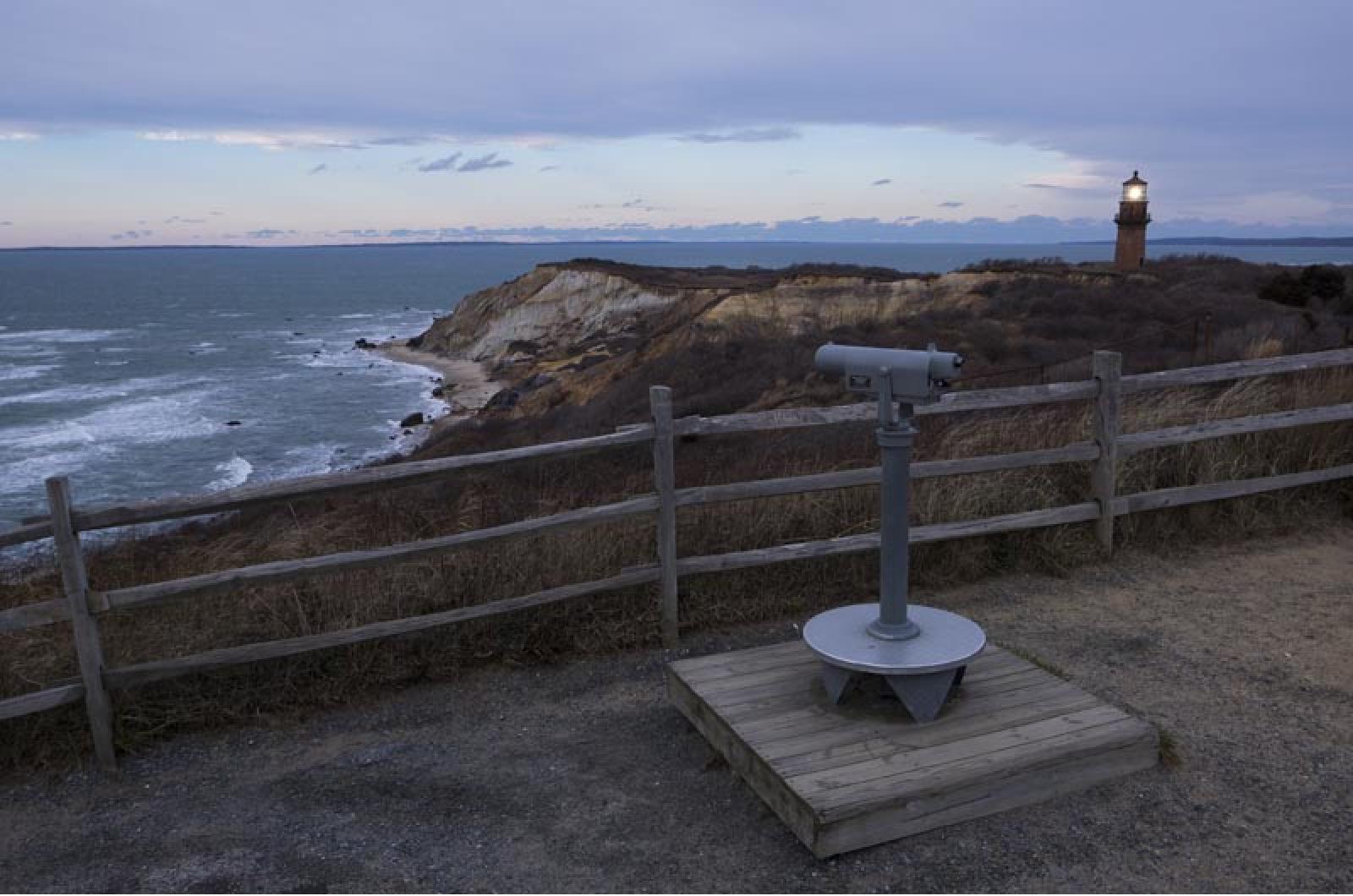The Gay Head Light, the beacon at the farthest end of the Island, helping boats navigate Vineyard waters safely for more than 150 years, inched closer this week to becoming town-owned.
Voters unanimously backed the acquisition and move of the lighthouse at a special town meeting on Tuesday, paving the way for the town to move forward with planning to relocate the historic structure, due to heavy erosion.
“This is an opportunity to do something that is not political. We all want to keep the light. It’s something relevant to the whole Island,” said Elise LeBovit, chairman of the Gay Head Light committee. “This is part of our heritage and part of our history.”
The tower, which dates back to 1856, needs to be moved in the next two years due to steady erosion at the Gay Head Cliffs.
The vote allows the town to apply for the transfer of ownership under the federal National Historic Lighthouse Preservation Act, which provides for lighthouses no longer considered mission-critical to be declared surplus property. The lights are offered at no cost to local governments, nonprofits and historic preservation groups.
The Gay Head Light is expected to be designated as surplus property by the U.S. Coast Guard in the coming year. Once it is listed, the town will need to write an application to the General Services Administration.
The federal government designates 12 lighthouses annually as surplus; last year Edgartown Light was listed and the town of Edgartown is now in the process of obtaining ownership.
The plan to move the light was discussed in detail at the selectmen’s weekly meeting prior to the special town meeting. Ms. LeBovit said the goals of the committee, now at 15 people, are ownership, site identification, geology, moving, fund-raising, grant application, restoration and continued operations of the lighthouse.
The committee is considering several pieces of land in and around the Aquinnah Circle with the goal “to get as far from the cliff as possible” and ideally gain 100 years before the lighthouse is again threatened by erosion.
The committee is considering four different parcels of land to which the light could be moved. The parcels vary in distance from the cliff’s edge, ranging from 160 to 260 feet. Three of the parcels are privately owned; one is listed on the market for $989,000. The fourth parcel being considered is the Aquinnah Circle, which is owned by the town. In the case of the Aquinnah Circle, the distance from the cliff to the lighthouse would be 234 feet.
In addition to distance and price, the committee is also considering the drop in elevation that would result in a move. For example, moving the lighthouse to the circle would result in a drop of 20 feet in elevation, Ms. LeBovit said. Orientation of the light and maritime use will also be considered in choosing a location.
Early estimates from International Chimney Corporation, a company that specializes in moving lighthouses, estimated that the cost of moving and renovating the light would be $1.5 million to $3 million. The committee plans to fundraise and seek grants to fund the entire restoration and the move.
At the special town meeting, lighthouse keeper Richard Skidmore said he is “totally in support of this. It’s something that is absolutely necessary.”
“It’s necessary to have the committee feel they have the support to move forward,” he added.
Voters also approved spending $5,000 in Community Preservation Act monies to fund a feasibility study for the lighthouse project. Community preservation committee chairman Derrill Bazzy said the committee fully supports “planning toward the best solution given the current situation.”
The money could go toward a feasibility study or geology study, depending on the need, Mr. Bazzy said, and more money could be allocated for restoration plans.
“It’s a thought-out initial step,” he said.
A total of 43 voters attended the special session.
The night began with a postponed special town meeting from November, where voters unanimously approved seven articles including a transfer of $16,700 from the town’s stabilization fund for the Massachusetts Estuaries Study of Menemsha and Squibnocket ponds. The town’s share was originally $31,700 but was cut in half thanks to a $15,000 contribution from Aquinnah resident Caroline Kennedy Schlossberg. The donation was a part of an agreement with the town when the family subdivided its 375-acre property in 2006 for estate planning reasons.
Voters also readily agreed to establishing a new reserve fund intended to pay for unused sick and vacation days for retired town employees and several unpaid bills from the prior fiscal year. The meeting concluded in just under one hour.




Comments (2)
Comments
Comment policy »